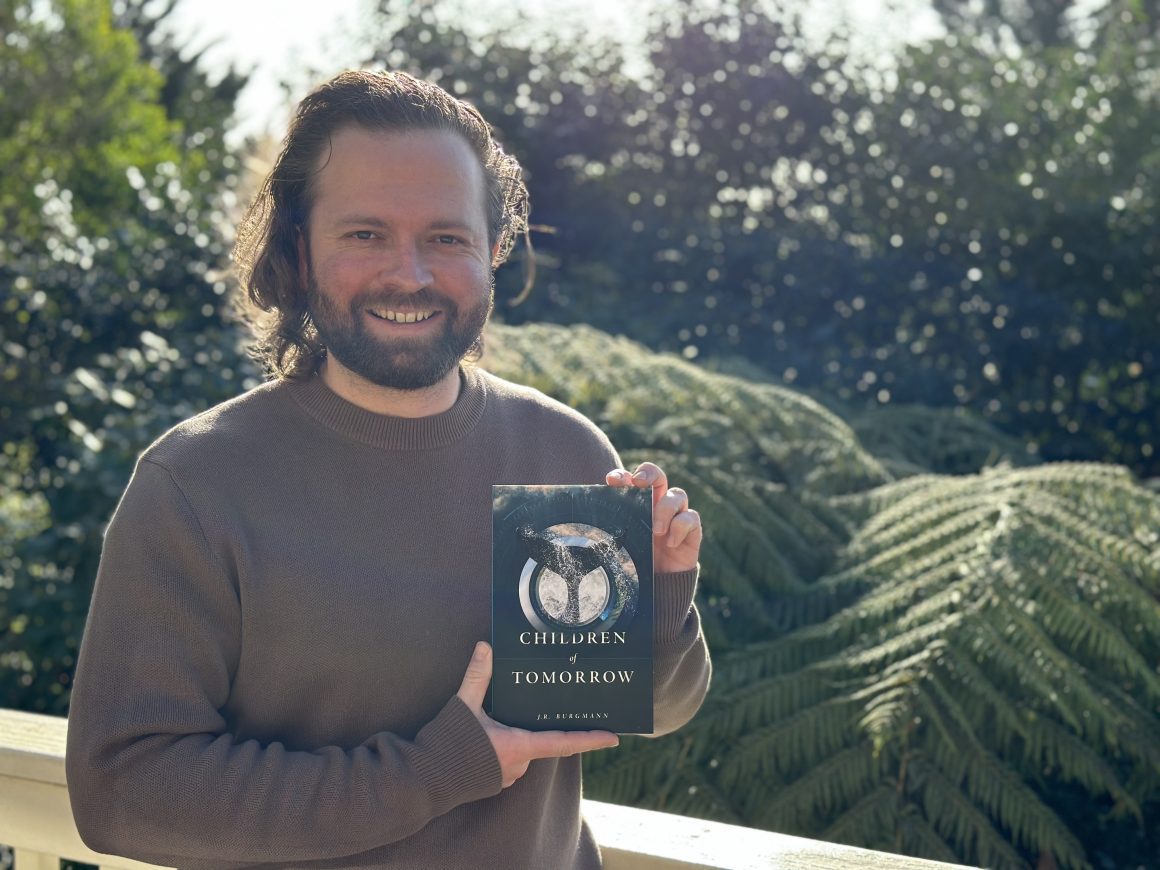
Hope can help us avoid a dystopian future
By Leonie O’Sullivan, April 7 2024—
The Gauntlet spoke with James Burgmann, Australian author of Children of Tomorrow, who offered fresh perspectives on climate change. Through his novel, Burgmann vividly depicts a future he hopes his children will not have to live in.
“The novel’s a warning in a way. I’m writing about a world that I’m worried will come—I don’t want that to be their world,” said Burgmann.
Children of Tomorrow is a sweeping saga that provides a broad view of how the ramifications of climate change trickle down from one generation to the next. The novel simultaneously explores planetary and personal loss. Burgmann worked with experts at Monash University to explore what the world could look like if we continued down this path.
“[The novel] goes into the future, but it also sits in the past. Using as much science as we could, extrapolating out into the future and playing with what might happen and what might be to come,” said Burgmann. “I know it sounds bleak, but I do play with the ideas of hope. The novel provides some view into how hope might help us move forward and address climate change.”
Each chapter of the book is adorned with a carbon dioxide parts per million (ppm) value instead of a date. While some readers feel that the novel portrays a dystopian future, the reality is that carbon dioxide ppm values are actually escalating much faster than the novel predicted. In 2024, we are experiencing carbon dioxide levels that James didn’t think we would reach until 2027.
“The real-world pathway is going faster than some of my worst imaginings four years ago,” said Burgmann.
This value at the beginning of each chapter is a reminder of our trajectory. Humans’ time on Earth represents a mere blip in our planet’s existence, yet our impact has been monumental. Burgmann described how geological temperature records have surged upward at an angle resembling the steep curve of a hockey stick.
“We’re watching these changes happen only in a matter of 100 to 200 years. That’s huge in an individual’s life. But in geological time, it’s tiny,” said Burgmann. “If you think about that kind of hockey stick curve, that kept haunting me.”
How can we bring the climate curve back down? It’s clear that no individual can tackle this crisis alone, and collective action is needed. You can help by staying informed and leveraging your knowledge to vote for political parties aligned with your views on the climate crisis. Now more than ever, we need leaders dedicated to reversing climate change.
“When we start talking about individual responsibilities, inevitably we meet the pitfalls and problems of global inequality. Rather than making individual changes in your life, because those are difficult for most people, you can weaponize or armour yourself with knowledge. Government policies and corporate regulation correlate with carbon emissions. It’s not abstract. There’s a concrete consequence,” said Burgmann. “I would say the number one thing for people to do, if they can, is to vote in a climate-friendly way and demand better of your workplace.”
It’s not the time to throw in the towel on climate change. Even slowing down the effects can positively impact all of our futures.
“I lean into the idea of relative hope. It’s better to have two degrees warming than three degrees warming. Neither is ideal, but everything we can do to mitigate and reduce [the effects] could [save] millions of lives and huge numbers of species. So I think that’s the space for hope in my novel,” said Burgmann.
The complexities of climate change do not stem from the scientific evidence but rather from how we can deal with it. Inform yourself and vote wisely to protect future generations. If you would like to read the novel Children of Tomorrow, you can find it on the Great Plains website, or you can support local and order it from a bookstore near you.
